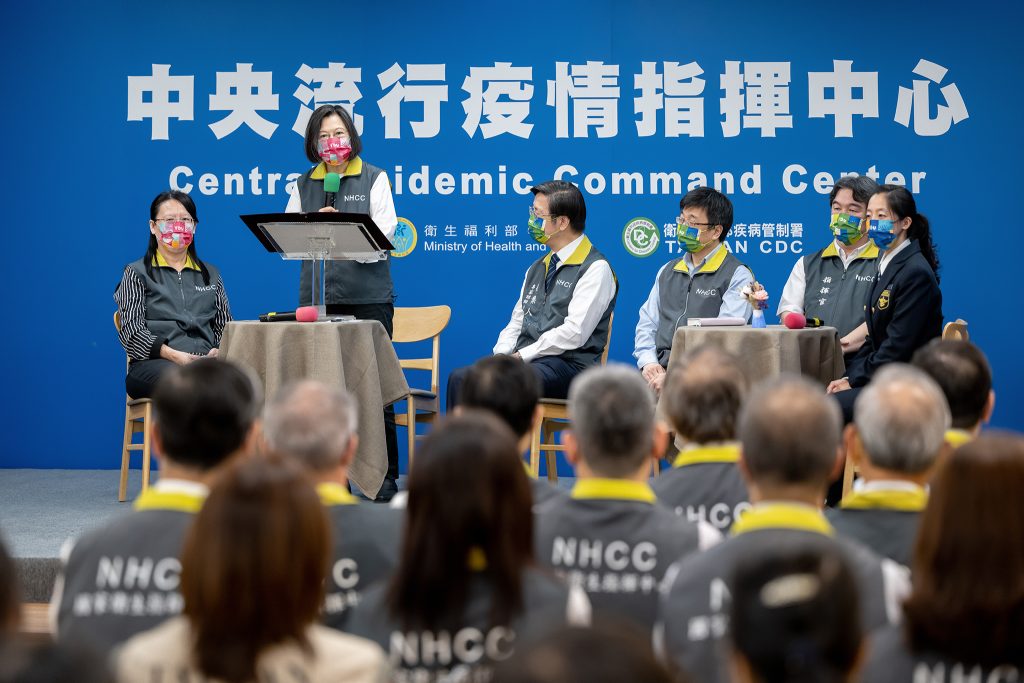—— Two sides of online censorship

Figure 1: “Weibo.com Logo English” by bfishadow is licensed under CC BY 2.0.
Medical dilemmas and misinformation during Covid-19
Misinformation concerning the risks, prevention, and treatment of Covid-19 has had devastating consequences, resulting in the loss of numerous lives. this misinformation stems from a variety of sources, each with its own motivations for propagating and believing it. In the realm of healthcare, the vast majority of professionals and organizations have staunchly upheld the principles of medical science and public health, demonstrating a deep commitment to the well-being of patients. Regrettably, there exists a vocal minority, along with their sponsors or allies, who have misused their medical qualifications to the detriment of the public. They have downplayed the well-established risk of severe illness, cast doubt on the safety and efficacy of vaccines without substantiating evidence, promoted unproven and perilous treatments, and amplified conspiracy theories regarding the field of science and those who work within it. These actions have added to the ethical strain and moral distress that healthcare workers have endured during the recurring waves of the Pandemic(Sage etc al., 2022). However, during the pandemic, misinformation is caused by the wave of free speech which in advanced, arises the discussion about it.

Figure 2: “10.15 總統出席「COVID-19防疫1000天『千錘百鍊 平安幸福』活動」” by Taiwan Presidential Office is licensed under CC BY 2.0.
Background
During the COVID-19 pandemic, panic began to spread around the world and caused a great deal of rumor and misinformation. Not only were people affected, but governments were vilified by misinformation and deliberate conspiracy theorists. At the same time, freedom of expression was being abused and if the government interfered, it was criticized by conspiracy theorists as a cover-up; however, human rights organizations viewed such interference or further coercive measures by the government as a violation of human rights and freedom of expression. Also, this crisis has revived enduring discussions regarding the absence of freedom of speech in China due to the fact that the government of China strengthen the censorship of Internet content in China.

Figure 3:”Free Speech” by charlesfettinger is licensed under CC BY 2.0.
Censorships of Internet Content in China During COVID-19
Even though China has believed to be the country which strongly limits the online freedom of expression, surprisingly, during the initial weeks of the outbreak, Chinese authorities temporarily eased certain restrictions, both in the realm of online and traditional media. Online criticism saw an uptick, and journalists were granted a relatively greater degree of freedom to critique the crisis management and uncover untold stories(Ghiretti, 2020). Meanwhile, the Chinese authorities continued to employ the media to propagate the official narrative, and their typical interventions in published articles and online discussions persisted. Nevertheless, when compared to recent trends in Chinese media, overall censorship momentarily relaxed, albeit temporarily.
From the perspective of analyzing the tools used in order to ensure the Internet content, the Chinese government’s stringent regulation of the online sphere is underpinned by a combination of legal restrictions, technical control mechanisms, and proactive intervention in online discourse. The online environment has undergone a significant tightening, marked by substantial investments in projects like the ‘Golden Shield Project.’ These endeavors serve as integral components of the government’s concept of ‘cyber sovereignty,’ enabling it to bolster state surveillance and exert control. (Moynihan & Patel, 2021)
Although Chinese citizens may occasionally find ways to access information and engage in online communication using workarounds like virtual private networks (VPNs), the substantial power disparity between the state and individuals renders the notion of online freedom of expression illusory. In China, there are virtually no legal or practical impediments to online surveillance. State authority over online platforms and content extends to the realm of propaganda and the manipulation of information. (Moynihan & Patel, 2021)
Similarly, the social media platform “Weibo” is not able to display some negative news or critical information about COVID-19 and any content related to COVID-19. For example, if some negative keywords are searched on Weibo, Weibo displays the search result of ”Search results are not displayed according to relevant laws, regulations and policies”. Also, the well-known application WeChat as the mega social application for all the Chinese citizens, has similar regulation in order to prevent misinformation and criticism while the user data is available to the Chinese government which means that the original author of rumors and misinformation would be charged and be under arrested due to the violation of regulations and laws.
“China Is Censoring Coronavirus Stories. These Citizens Are Fighting Back. | NYT News” by The New York Times. All right reserved. Retrieved from: https://www.youtube.com/watch?v=m5fsidSOJMw
Impacts towards the citizens
As an impact of such tough regulation, despite being seen as negative or detrimental to human rights by many Western mainstream media, the regulation is still a benefit to the general public.
In terms of negative impact, the public was not properly informed about the outbreak in the first place, thus missing the golden opportunity to take the first precautions. At the same time, over-regulation has caused a lot of panic among the general public, due to a lack of knowledge about the outbreak, and has bred a lot of conspiracy theories and rumors. These rumors and conspiracy theories have further increased the public’s mistrust of the pandemic prevention measures and the government, as well as allowing the spread of folk methods that do not have any disease-causing ability. There are also a lot of individuals who make money from pandemic and national tragedies, either to make a profit or to disrupt the market, making it harder for the regular citizens to get the protection they need. For example, there are many people who buy and sell masks for profit and the general public are forced to go to these people to buy supplies because they cannot buy masks from normal channels. The strong regulatory approach, the uncertainty spread among the population and the lack of a positive official response have also aggravated public anger.
From the perspective of positive impact, tough regulation has reduced the spread of rumors and conspiracy theories and, to the greatest extent possible, has curbed the spread of bad public opinion and the possibility of manipulation of public opinion by other countries. In the United States during the pandemic, there were many false reports of pandemic deaths and conspiracy theories about human removal programs which related to the U.S. government executives as well as big capitalists such as Bill Gates, he cautioned humanity five years ago that epidemics should be prioritized over war(McKay, 2020). Similarly, these conspiracy theories prompted demonstrations during the pandemic and revolts against vaccinations and other medical protection, causing huge and significant negative outcomes and further badly consequences. Compared to the United States, the content of China’s online regulation is undoubtedly more positive. Considering China’s total population, any uncertain rumor is extremely susceptible to market bias, public sentiment fluctuations and public opinion riots. Without regulations, panic due to the uncertainty of everything could cause more profound and negative outcomes and damage towards the general public than the pandemic or the COVID-19 itself.
Evaluation for the effectiveness and usefulness
China’s regulation of online content during the COVID-19 pandemic had both benefits and drawbacks. On the positive side, strict regulation helped control the rampant spread of disinformation and conspiracy theories, a problem that plagued many other countries during the crisis. This curbed panic and mistrust, safeguarded public health and prevented market exploitation. By reducing the likelihood of public opinion unrest and mass disruption, it maintains social stability. In addition, it is seen as essential to national security, limiting foreign manipulation and influence. However, this strict approach has significant drawbacks, including limited public access to accurate information and infringement of freedom of expression. While the approach may have been effective in containing short-term crises, its potential long-term consequences include reduced trust in public institutions, limited access to information and violations of basic human rights. An assessment of this approach highlights the difficult task of balancing information control and freedom of expression, with wider global implications for the regulation of online content during crises. So in terms of effectiveness, this is a mixed measure.
In terms of efficiency, it was undoubtedly ineffective, because throughout the pandemic, there were many poorly informed and unchecked rumors that led to widespread panic and irrational behavior.
Reference List
bfishadow. (2011, June 8). Weibo.com Logo English. Flickr. https://www.flickr.com/photos/61368956@N00/5812042373
Fettinger, C. (2012, July 31). Free Speech. Flickr. https://www.flickr.com/photos/46148809@N05/7684998288
Ghiretti, F. (2020). The Coronavirus and Freedom of Expression in China: Not so Fast. https://www.iai.it/en/pubblicazioni/coronavirus-and-freedom-expression-china-not-so-fast
McKay, B. (2020, May 11). Bill Gates Has Regrets. Wall Street Journal. https://www.wsj.com/articles/bill-gates-coronavirus-vaccine-covid-19-11589207803
Moynihan, H., & Patel, C. (2021). Restrictions on Online Freedom of Expression in China. https://www.chathamhouse.org/2021/03/restrictions-online-freedom-expression-china/chinas-domestic-restrictions-online-freedom
Sage, W. M., & Yang, Y. T. (2022). Reducing “COVID-19 Misinformation” While Preserving Free Speech. JAMA, 327(15), 1443–1444. https://doi.org/10.1001/jama.2022.4231
The New York Times. (2020). China Is Censoring Coronavirus Stories. These Citizens Are Fighting Back. | NYT News [YouTube Video]. In YouTube. https://www.youtube.com/watch?v=m5fsidSOJMw
總統府. (2022, October 14). 10.15 總統出席「COVID-19防疫1000天『千錘百鍊 平安幸福』活動」. Flickr. https://www.flickr.com/photos/40092099@N04/52428722365

